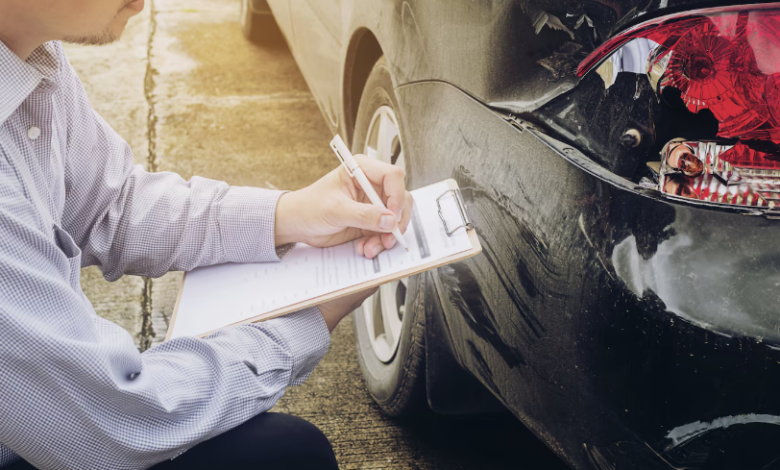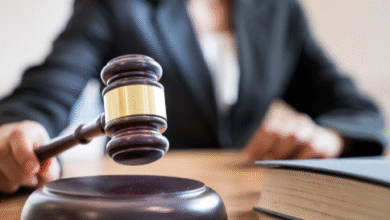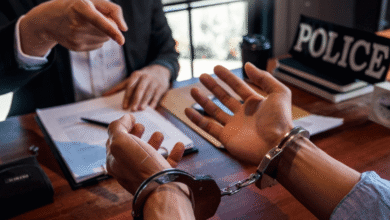Understanding Auto Accident Litigation: What to Expect When You File a Claim

Initial Steps After an Auto Accident
Reporting the Incident to Authorities
Okay, so you’ve just been in a car accident. First things first: call the police. Seriously, even if it seems minor, getting an official police report is super important. This report can be a key piece of evidence later on, especially if there’s a dispute about who’s at fault. The police will document the scene, gather statements from everyone involved, and create a record of what happened. Don’t skip this step!
- Call 911 (or your local emergency number) immediately.
- Provide the dispatcher with your location and a brief description of the situation.
- Wait for the police to arrive and follow their instructions.
It’s better to be safe than sorry. Reporting the accident protects you legally and ensures that there’s an official record of the event.
Gathering Evidence at the Scene
Once the police are on their way (or have arrived and said it’s okay), start gathering evidence. This means taking pictures of everything: the damage to your car, the other car, any skid marks on the road, and the overall scene. Get the other driver’s insurance information and driver’s license details. Also, if there are any witnesses, try to get their contact information. All of this can be really helpful when you file your claim.
- Take photos of all vehicles involved, focusing on the damage.
- Exchange insurance and contact information with the other driver(s).
- Note the date, time, and location of the accident.
Seeking Immediate Medical Attention
This is probably the most important thing. Even if you feel fine after the accident, you need to see a doctor. Some injuries, like whiplash or internal bleeding, might not be immediately obvious. Getting checked out right away not only protects your health but also creates a medical record that links your injuries to the accident. This is crucial for your insurance claim. Don’t wait – get medical attention ASAP.
- Visit a doctor or urgent care clinic as soon as possible.
- Explain that you were involved in a car accident and describe any symptoms you’re experiencing.
- Follow your doctor’s recommendations for treatment and follow-up care.
Understanding Your Legal Options in Auto Accident Litigation
After a car crash, figuring out your legal options can feel like trying to solve a puzzle with missing pieces. It’s not always straightforward, and the rules can change depending on where the accident happened and the specifics of your insurance coverage. Let’s break down some key things to consider.
Navigating No-Fault vs. At-Fault Systems
One of the first things to understand is whether you live in a no-fault or at-fault state. This determines who pays for your initial medical bills and lost wages, regardless of who caused the accident.
- In no-fault states, your own insurance (specifically, Personal Injury Protection or PIP) covers these expenses, up to your policy limits. You might not be able to sue the other driver unless your injuries meet a certain threshold (like permanent disfigurement or significant disability).
- In at-fault states, the person who caused the accident (or their insurance company) is responsible for paying for the damages. This often involves filing a claim against the other driver’s insurance.
- Some states have a modified no-fault system, which is a hybrid of the two. You start with your own insurance, but you can sue the at-fault driver under certain circumstances.
Exploring Personal Injury Protection (PIP)
PIP coverage is a big deal, especially in no-fault states. It covers your medical bills, lost wages, and sometimes even other expenses like rehabilitation or attendant care. Even if you were at fault for the accident, PIP can still kick in.
Here’s a quick rundown of what PIP typically covers:
- Medical expenses (doctor visits, hospital stays, therapy)
- Lost wages (if you can’t work due to your injuries)
- Rehabilitation costs (physical therapy, occupational therapy)
- Funeral expenses (in the unfortunate event of a fatality)
PIP coverage limits vary by state and policy, so it’s important to know what your policy covers. It’s also worth noting that PIP usually doesn’t cover vehicle damage; that falls under collision or property damage coverage.
Considering Uninsured/Underinsured Motorist Coverage
What happens if you’re hit by someone who doesn’t have insurance (uninsured) or doesn’t have enough insurance to cover your damages (underinsured)? That’s where uninsured/underinsured motorist (UM/UIM) coverage comes in. This coverage protects you and your passengers if you’re injured by a driver who can’t pay.
UM/UIM coverage typically covers:
- Medical expenses
- Lost wages
- Pain and suffering
It’s like having insurance for the other driver. If you’re hit by an uninsured or underinsured driver, you can file a claim with your own insurance company under your UM/UIM coverage. This can be a lifesaver if you have significant injuries and the at-fault driver has limited or no insurance. It’s often an add-on to your policy, but it’s worth considering, especially given the number of uninsured drivers on the road.
Understanding your legal options after a car accident can be overwhelming. Knowing the difference between no-fault and at-fault systems, understanding PIP coverage, and considering uninsured/underinsured motorist coverage are important steps in protecting your rights and recovering from your injuries. It’s always a good idea to talk to a lawyer to get personalized advice based on your specific situation.
The Role of a Personal Injury Attorney
Evaluating Your Auto Accident Claim
So, you’ve been in a car accident. Now what? A big part of figuring out your next steps is understanding the value of your claim. A personal injury attorney can really help here. They look at everything – medical bills, lost wages, property damage, and even the less obvious stuff like pain and suffering. They’ll give you a realistic idea of what your case is worth, which is super important before you start talking to insurance companies.
Think of it like this:
- They gather all the relevant documents.
- They assess the long-term impact of your injuries.
- They consider any pre-existing conditions that might affect your claim.
It’s easy to underestimate the true cost of an accident. An attorney makes sure you don’t leave money on the table.
Negotiating with Insurance Companies
Dealing with insurance companies can be a headache. They’re often looking out for their bottom line, not necessarily your best interests. A personal injury attorney acts as your advocate. They know the tactics insurance companies use to try and minimize payouts, and they know how to counter them. They handle all the communication, paperwork, and negotiations, so you don’t have to stress about it. Finding the best personal injury attorney can make a huge difference.
Representing You in Court
Sometimes, despite everyone’s best efforts, a fair settlement just isn’t possible. That’s when a lawsuit becomes necessary. If your case goes to court, a personal injury attorney will represent you every step of the way. This includes:
- Filing the lawsuit.
- Gathering evidence.
- Presenting your case to a judge or jury.
They’ll prepare you for trial, guide you through the legal process, and fight for your rights in court. It’s a big relief to have someone experienced on your side, especially when things get complicated. They will help you navigate the legal system and hopefully get you the compensation you deserve.
Key Stages of Auto Accident Litigation
So, you’ve decided to pursue auto accident litigation. What happens next? It’s not like on TV. Here’s a breakdown of the key stages you can expect.
Filing the Complaint and Discovery Process
This is where things officially kick off. The first step is filing a formal complaint with the court, outlining the details of the accident, the other driver’s negligence, and the damages you’ve suffered. Once the complaint is filed, the discovery process begins. This is where both sides gather information to build their cases. Think of it as a fact-finding mission. It can involve:
- Interrogatories: Written questions that each side must answer under oath.
- Document requests: Demanding copies of relevant documents, like police reports, medical records, and insurance policies.
- Depositions: Oral examinations where witnesses are questioned under oath. More on that later!
Mediation and Settlement Discussions
Most auto accident litigation cases don’t actually go to trial. Instead, they’re resolved through settlement negotiations. Mediation is a common way to try and reach a settlement. A neutral third party, the mediator, helps facilitate discussions between you and the other side. The mediator doesn’t make a decision but helps each side understand the other’s position and explore potential compromises. It’s a chance to avoid the time, expense, and uncertainty of a trial. Sometimes it works, sometimes it doesn’t.
Preparing for Trial
If settlement negotiations fail, the case proceeds to trial. This involves a lot of preparation. Your attorney will work to:
- Gather evidence: This includes documents, photos, videos, and witness testimony.
- Prepare witnesses: Making sure witnesses are ready to testify effectively.
- Develop legal strategy: Planning how to present your case to the judge or jury.
Trial can be stressful. It’s important to work closely with your attorney to understand the process and be prepared for what’s to come. It’s a long road, but with the right preparation, you can increase your chances of a favorable outcome in your auto accident litigation case.
Types of Damages in Auto Accident Claims
Compensatory Damages for Injuries
When you’re hurt in a car wreck, you can get money to make up for what you’ve lost. This is called compensatory damages. These damages are meant to put you back in the position you were in before the accident happened, as much as money can, anyway. It’s not just about fixing your car; it’s about covering all the ways the accident messed up your life. This can include medical bills, lost wages, and even the pain and suffering you went through.
Economic vs. Non-Economic Damages
There are two main types of compensatory damages: economic and non-economic. Economic damages are the easy ones to calculate. They’re things like:
- Medical bills (past and future)
- Lost wages (past and future)
- Property damage (like fixing your car)
- Other out-of-pocket expenses
Non-economic damages are trickier. They’re about things that don’t have a clear price tag, such as:
- Pain and suffering
- Emotional distress
- Loss of enjoyment of life
- Disfigurement
Figuring out how much these are worth can be tough, and it often involves looking at similar cases and getting expert opinions.
Punitive Damages in Severe Cases
Sometimes, if the other driver was really, really bad – like driving drunk or doing something incredibly reckless – you might be able to get punitive damages. These aren’t about compensating you for your losses. Instead, they’re meant to punish the bad driver and to stop others from doing the same thing. Punitive damages are not awarded in every case; they’re reserved for situations where the driver’s behavior was outrageous.
Getting punitive damages is rare. The court has to find that the other driver acted with malice or a reckless disregard for your safety. It’s a high bar to clear, but if you can, it can significantly increase the amount of money you get.
Common Challenges in Auto Accident Litigation
Auto accident litigation can be a real headache. It’s not always a straightforward process, and several hurdles can pop up along the way. Understanding these challenges can help you prepare and maybe even avoid some common pitfalls. It’s good to know what you’re up against.
Proving Negligence and Causation
One of the biggest challenges is proving that the other driver was negligent and that their negligence directly caused your injuries. You have to show that the other driver had a duty of care, breached that duty, and that this breach led to your damages. This can be tricky, especially if there’s conflicting evidence or if the other driver denies responsibility. Sometimes, it boils down to a ‘he said, she said’ situation, and that’s where things get complicated. You might need to gather police reports, witness statements, and even accident reconstruction experts to build a solid case.
Dealing with Lowball Settlement Offers
Insurance companies are businesses, and they often try to minimize payouts. This means you might receive a settlement offer that’s way lower than what your claim is actually worth. It’s frustrating, but it’s a common tactic. You need to be prepared to negotiate and potentially reject the initial offer. Having a lawyer can be really helpful here, as they know how to assess the true value of your claim and fight for a fair settlement. Don’t be afraid to push back and stand your ground.
Statute of Limitations and Deadlines
Every state has a statute of limitations, which sets a deadline for filing a lawsuit. If you miss this deadline, you lose your right to sue. It’s crucial to be aware of the statute of limitations in your state and to act quickly. There might also be other deadlines for notifying the insurance company or filing certain documents. Missing these deadlines can seriously hurt your case. Keep track of all important dates and make sure you’re meeting all the requirements. It’s a detail-oriented process, but it’s essential.
Navigating the legal system after a car accident can feel overwhelming. It’s important to stay informed, be persistent, and seek professional help when needed. Don’t let the challenges discourage you from pursuing the compensation you deserve.
Preparing for Your Deposition and Trial
Understanding the Deposition Process
Okay, so you’re getting ready for a deposition. What’s that even mean? Basically, it’s a formal question-and-answer session where the other side’s lawyer gets to ask you questions about the accident, your injuries, and anything else they think is relevant. It’s recorded, and they can use it later in court. It’s not exactly fun, but it’s a really important part of the process. You’ll be under oath, so you have to tell the truth.
- Listen carefully to each question.
- Take your time before answering.
- If you don’t understand, ask for clarification.
Testifying Effectively in Court
Testifying in court can be nerve-wracking, no doubt. The key is to stay calm, be honest, and answer the questions directly. Don’t volunteer information, and don’t guess if you don’t know the answer. It’s okay to say, “I don’t know” or “I don’t remember.” Dress professionally, speak clearly, and maintain eye contact with the jury. Your demeanor can make a big difference in how the jury perceives you.
Presenting Evidence to a Jury
Presenting evidence to a jury is where your lawyer really shines. They’ll guide you through the process of showing the jury the facts of your case. This could include things like photos of the accident scene, medical records, police reports, and witness testimony. Your lawyer will explain what each piece of evidence means and how it supports your claim. It’s a team effort, and your role is to be prepared to answer questions about the evidence and explain your perspective.
Remember, the jury is there to listen to both sides of the story and make a decision based on the evidence presented. Your lawyer’s job is to make sure they have all the information they need to make a fair decision.
Frequently Asked Questions
What should I do right after a car accident?
After a car crash, you should first make sure everyone is safe and call the police. Get medical help if needed. Also, try to get information from the other driver and take pictures of the scene.
When should I get a lawyer after a car accident?
It’s a good idea to talk to a personal injury lawyer as soon as you can after an accident. They can help you understand your rights and what steps to take next.
How long does a car accident case usually take?
The time it takes for a car accident case to finish can be different for everyone. Some cases settle quickly, while others might take a year or more, especially if they go to court.
What kind of money can I get after a car accident?
You can ask for money to cover your medical bills, lost wages from not being able to work, pain and suffering, and damage to your car.
How do lawyers get paid for car accident cases?
Most of the time, personal injury lawyers work on a ‘contingency fee’ basis. This means they only get paid if you win your case, and their payment comes from a part of the money you get.
What if the car accident was partly my fault?
Even if you think the accident was partly your fault, you might still be able to get some money. Laws about this can be tricky, so it’s best to talk to a lawyer to understand your options.



